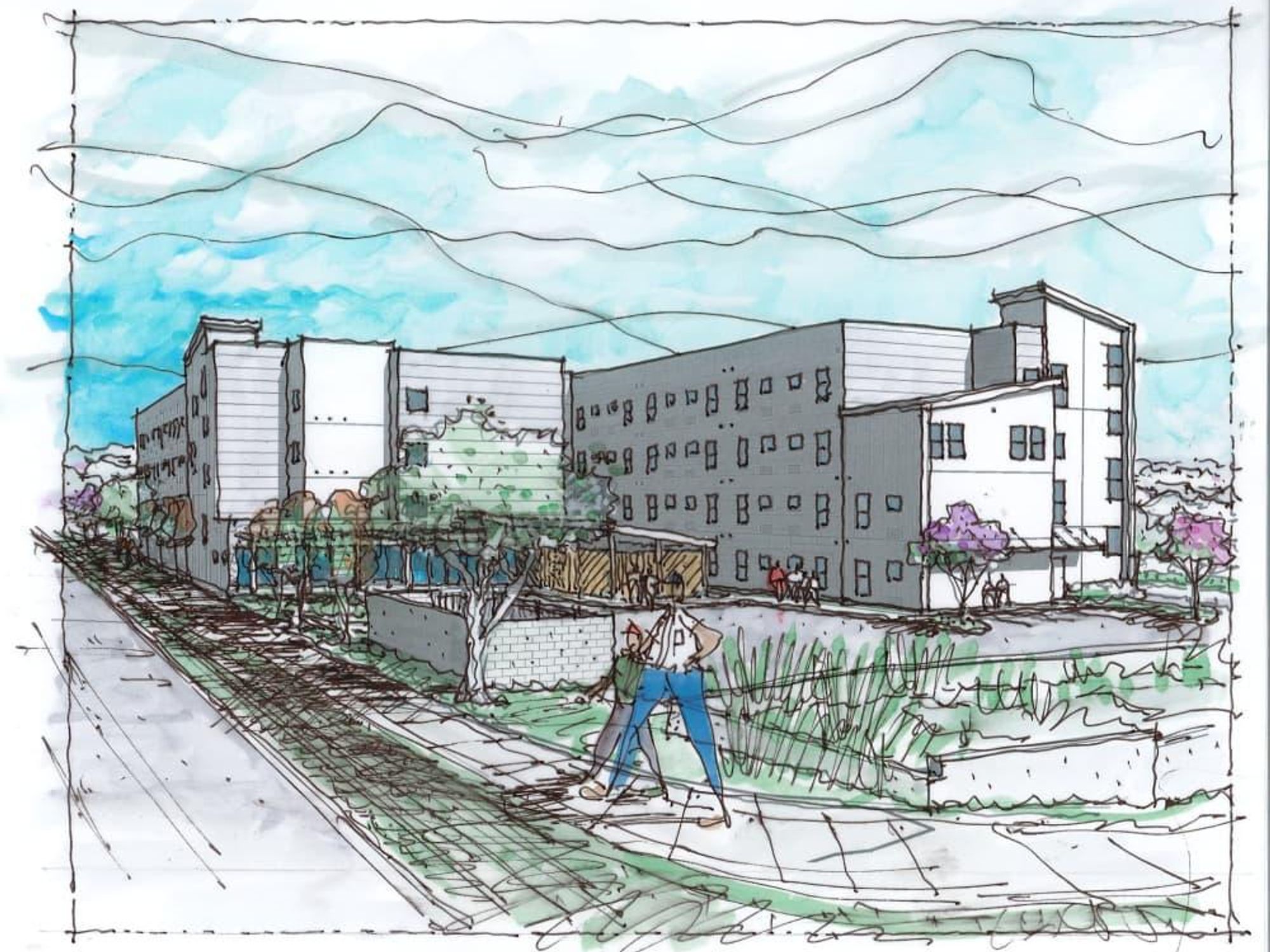Aiming for affordability
New affordable North Austin community underway to combat area homelessness

As Austin continues to grapple with how to help the homeless population, developers will kick off construction this summer on a 171-unit project in North Austin featuring affordable apartments for permanent housing.
Caritas of Austin, a nonprofit that seeks to end homelessness in Austin, has teamed up with the Austin Housing Finance Corp. and Springfield, Missouri-based developer The Vecino Group to build Espero Austin at Rutland. The $34 million project will be at 1934 Rutland Dr., near Metric Boulevard and West Rundberg Lane in North Austin. The apartments, set for completion in the fall of 2022, will replace a small strip shopping center.
The apartments are meant for people who are homeless or at risk of homelessness and have annual income of up to $33,150. Rental rates haven’t been set. Each studio apartment will house one man or woman.
Amenities at Espero at Rutland will include a community room, fitness center, courtyard, and bicycle storage.
Kathryn Quinn, president and CEO of Caritas of Austin, says Espero Austin at Rutland will supply “deeply affordable and intensely supportive permanent housing.”
Espero at Rutland is one of several efforts geared toward putting a permanent roof over the heads of homeless people in Austin. For instance, Tim Shea recently became the first homeless person to ever occupy a 3D-printed home. The 400-square-foot home, made by Austin-based Icon, is at the Community First! Village, which provides housing to chronically homeless people. The village is near State Highway 130 and FM 969 in eastern Travis County.
A one-night snapshot taken in 2020 showed 2,506 people in Austin were experiencing homelessness. That represented the highest annual tally in Austin over a 10-year period and an 11 percent increase compared with the 2019 figure. Another estimate puts the homeless population in Travis County at roughly 10,000.
The Ending Community Homelessness Coalition (ECHO), an Austin-based nonprofit, says “the true number of people experiencing homelessness is difficult to determine because people fall into and exit from homelessness all the time . …”
